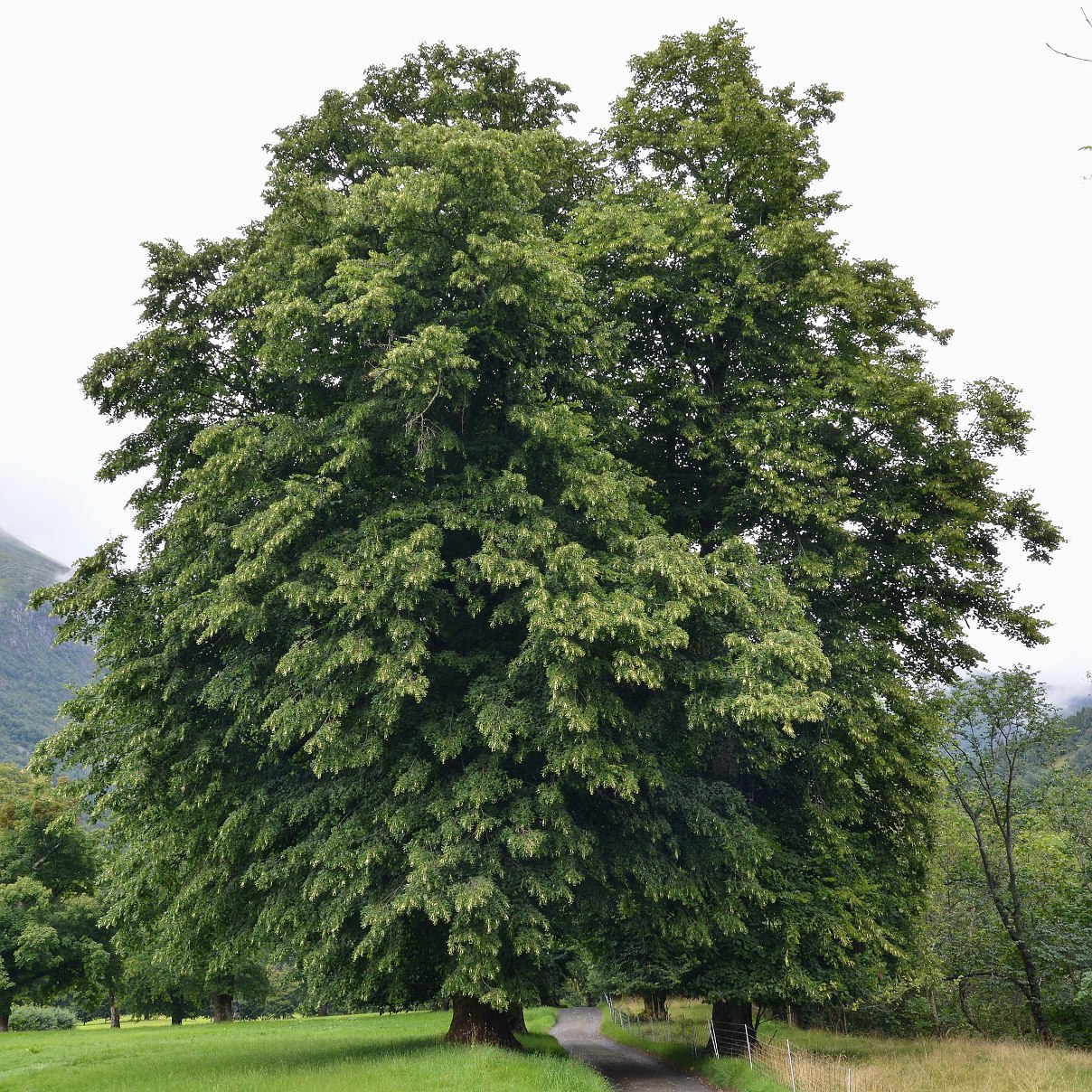Tilia platyphyllos
Large leaved lime
Species Tolerances
- Drought Tolerance: Medium
- Shade Tolerance: Yes
- Waterlogging Tolerance: Low
- Frost Tolerance (trees from warmer climates may be frost tolerant, but their flowers may not be): Yes
- RHS Hardiness: H6
- Optimum Conditions for Growth:
A very large, long lived tree that prefers rich, alkaline and free-draining soils. It can tolerate low temperatures in winter but requires a warm summer to grow well. Shade tolerant, it can grow as a double avenue in any orientation, or in a line. Can be coppiced or pleached. Now natively not common, growing wild in a few sites such as West Midlands, moors and downs. - Susceptibility to Pest/Disease:
May be susceptible to verticillium wilt and phytophthora

A short avenue of 4 Large-leaved Limes Tilia platyphyllos in Kvinnherad, Norway/ Ryan Hodnett/ https://creativecommons.org/licenses/by-sa/4.0/deed.en
Service to Pollinators
- Summary of Service to Pollinators:
A major honey producing tree mostly from the flowers but also from honeydew which is a significant contribution when aphids are active. Widely visited by all pollinators. Evidence that resins/oils are collected by honeybees for propolis. Flowering slightly earlier than Small leaved lime, this tree rescues hungry pollinators from the ‘June gap’. - Nectar Value to Pollinators: 3 (of 0-3)
- Honeydew Value to Pollinators: 3 (of 0-3)
- Pollen Value to Bees: 2 (of 0-3)
- Flowering Period: June-Jul
Risks
- Human Toxicity: Non-toxic
- Livestock Toxicity: Non-toxic
- Invasive Risk: No
- Suckering: No
Products
- Edible Fruit: Yes
- Edible Leaves: Yes
- Edible Sap: Yes
- Edible Seeds: Yes
- Honey, major source in UK: Yes
- For any medicinal potential, see 'Further Details' below.
- Timber: Yes
- Livestock Fodder: Yes
- Other Products:
Some reports that raw immature fruits can be ground with flowers to make a chocolate-tasting paste. Large quantities of honeydew are produced via aphids which can provide up to 1Kg of sugar per m2 per year. Evidence that resins/oils are collected by honeybees for propolis. Sap can be tapped as with Acer spp. Can be coppiced or pollarded without harming the tree and capable of producing long, straight poles.
Utility
- Nitrogen Fixation: No
- Organic Matter Accumulation: Yes
- Phytoremediation: No
- Deacidification: No
- Windbreak: Yes
- Soil Erosion Control: Yes
- Shade or Shelter: Yes
- Plant Support: Yes
- Integrated Pest Management: No
- Wildlife Value: Yes
- Wildlife Value Summary:
Good for biodiversity referring to invertebrate diversity feeding on the tree, especially insects. Seeds and fruit are available to a large range of birds and mammals. - Graduated Nativeness Classification ⓘ: 1 (of 1-10)1. Historic Native
2. Historic Introduction
9. Neutral Introduction
Further Details
Sap can be tapped and leaves have medicinal properties. Moderately drought tolerant owing to their wide and deep root system, though avoids sites which are persistently dry. Some reports of frost damage during dormancy. Resistant to strong winds where planted in deep, free-draining sites where deep roots can develop. Can be layered or coppiced into an effective shelter-belt.